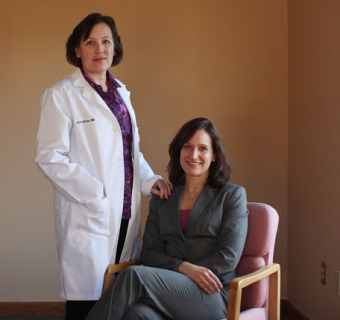 The executive summary is the Cliff’s Notes of your business
The executive summary is the Cliff’s Notes of your business
One of my favorite Saturday Night Live sketches was Father Guido Sarducci’s Five Minute University. The idea was that a 16 week college course could be reduced to one thought in five minutes, like economics is basically the law of supply and demand. To pass the test all you had to do was attend the right class for five minutes.
When you need money for your business, investors will initially want to see an executive summary of your business plan. Nothing elaborate or fancy, pruned of jargon and business buzz-speak, the executive summary is like a Cliff’s notes of your business, quickly identifying the highlights to help them determine whether, in five minutes, your idea is worth a further look.
Here’s an example of what is should look like in PDF form so it can be sent to your favorite smart money source.
OVERVIEW
Our Awesome Company (OAC) is a medical device company with a revolutionary patent pending technology to treat bad breadth.. Our goal is to be the market leader in providing minimally invasive treatments that address the root cause of bad breadth. In 2010, OAC successfully completed its initial human proof of concept study outside the US. OAC is seeking a $500,000 bridge fund right now and $3 million in funding to perform a Pilot clinical study at a US site beginning in early 2011. An additional $10 million will be required for a Pivotal study in Q4 2011. FDA approval is expected in late 2012. The Company anticipates financial exit via acquisition.
BAD BREATH
Bad breath has multiple causes including gastroesophageal reflux disease, sinus infections and chronic infections of the tonsils and adenoids. The most common cause is gingivitis and bacterial impregnation at the base of the tongue. Treatments to date, including turning your head to the side, oral breath mints and putting your hand over your mouth have proved ineffective over the long term.
MARKET
The current market for bad breath/halitosis products is $6+ billion worldwide. Market growth rate is estimated at 20% per year due to demographic factors , growing awareness of the condition and increasing intolerance of members of the opposite sex. The current standard of treatment for patients are insults, denigraton and criticism.. The current treatment consists of an air pump and mask that the patient wears while in contact with humans.. The compliance rate for this treatment is less than 50%. The National Institutes of Health has stated that bad breath is a major public health problem and is associated with other chronic diseases like excessive nerdiness, depression and withdrawal..
TECHNOLOGY
Our product, BetterBreath, is an implanted device inserted into the tongue by a single needle injection under local anesthesia. Once implanted, the device emits a remotely controlled plume of breath freshener into the mouth. The entire procedure takes 2 to 5 minutes and can be performed in a doctor’s office. The device can be easily adjusted or totally removed in 1 minute without the need for anesthesia. Extensive preclinical and initial human studies show efficacy with excellent safety and patient comfort.
INTELLECTUAL PROPERTY
OAC/BetterBreath’s initial patent application has been filed in the United States, the European Union, Japan, and other important markets. Two other patent applications are also pending.
FDA PATHWAY
Intraoral devices for treatment of halitosis are considered predicate devices with a 510(k) regulatory approval process.
FINANCIALS
Management is seeking $500,000 in bridge financing to prepare for pilot clinical studies in the US; $3 million to fund Pilot study clinical trials beginning in early 2010, and an additional $10 million is budgeted for Pivotal study trials leading to FDA approval in late 2012.
TEAM
Bob Dragonbreath is the Chief Executive Officer of OAC. He has 20+ years of product development experience focused in minimally invasive implantable medical devices at Johnson and Johnson, Cordis, and C.R. Bard. He has 10 issued patents and several more submitted. He has lead small and large teams in the areas of concept development, product design, clinically relevant testing, and product commercialization.
I.M. Lookingforanotherjob, M.D.DDS, is founder and currently Chief Medical Officer. Dr. Lookingforantoherjob is a leading authority on the anatomy of the human upper airway as well as a board certified Otolaryngologist and Dentist with 20 years experience in treating patients with really bad breath. He was a faculty member in the Departments of Otolaryngology at Harvard, Cambridge and Oxford for 17 years. During that time he was Principal Investigator on 5 NIH grants researching unique aspects of the human upper airway. He has published over 50 articles in medical journals and received 15 major research awards.
INVESTORS
Big Deal Ventures LLC, a New York-based venture fund, invested $3.5 million in early 2007 to fund product development and the first-in-man trial.
In the words of Father Sarducci, ''There were actually more than ten, but Moses was old and grumpy, and after he broke the tablets he could only remember the negative ones. "Don't do this. Don't do that." The truth is, most of them were more like advice. The Twelfth Commandment, for example, was "Whistle while you work." (People think its from Disney, but Disney stole it from God.)" Even Moses needed to keep it short.
 Oncology Rehab Partners is looking to better cancer survivors quality of life.
Oncology Rehab Partners is looking to better cancer survivors quality of life.




 2 Comments
2 Comments



